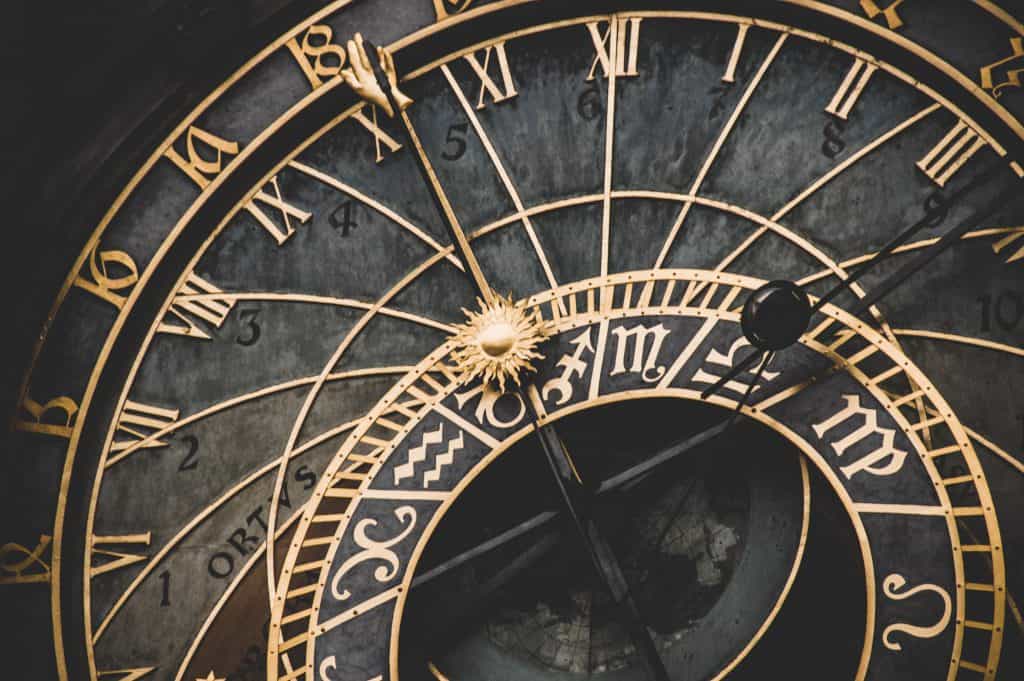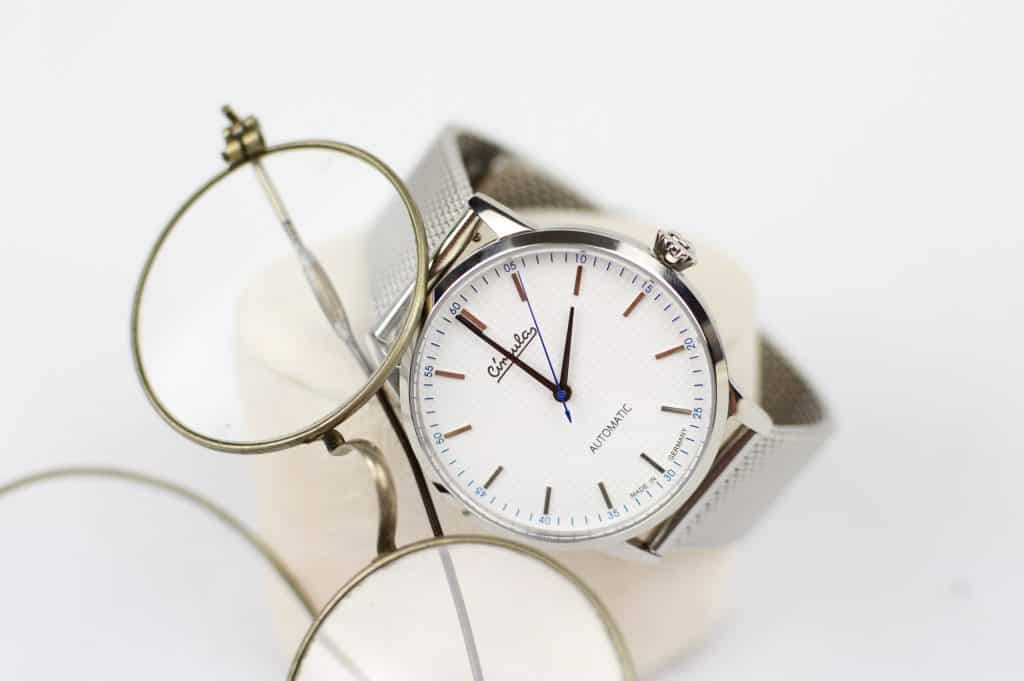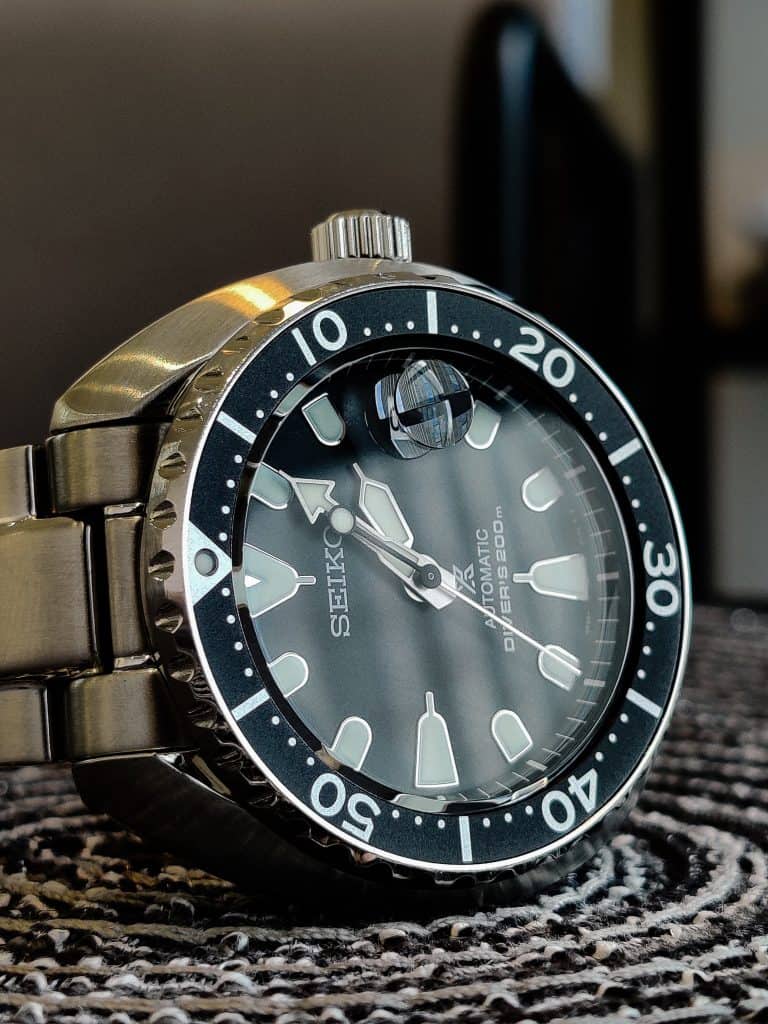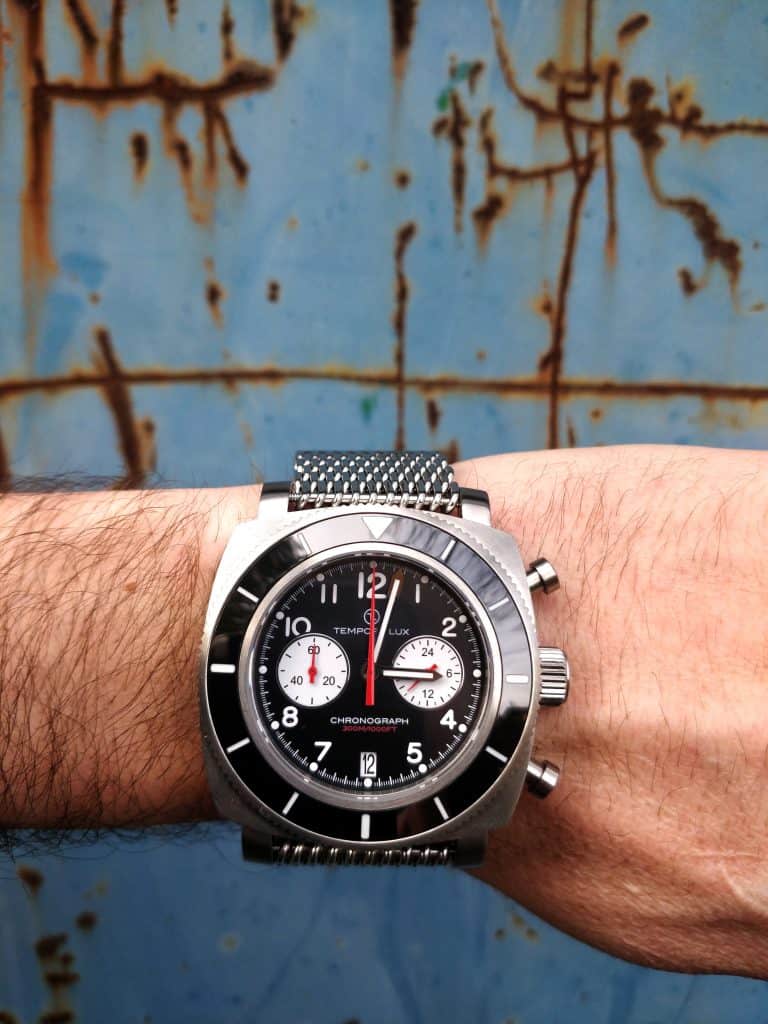Many people decide on a watch by its design, but there’s so much more to know about this little accessory than meets the eye.
There’s the movement, the complication, the display, and the manufacturer to consider, especially if you’re planning to purchase something that you expect to last a lifetime.
It may be more helpful to categorize watches according to certain qualities to help narrow down your choices and make it easier to differentiate watch groups from each other.
By including the advantages and disadvantages of each watch type, you’ll have a better idea of which watch is more suited to your style and needs.
What Are the Types of Watches?
It’s hard to completely separate one type of watch from the other because there are overlapping qualities that can put the timepiece in two or more categories.
Still, watches can be described in broader groups using the following sets:
The easiest way to categorize watches is by how their display looks.
They may have the traditional analog, digital, hybrid, tactile, or touchscreen faces, each serving different purposes and kinds of users.
Analog watches
Analog watches define the traditional look of a wristwatch, complete with hands circumnavigating the dial.
The case can come in any shape as long as the hands move in a circular fashion for easier time navigation.
Pros:
- They look more formal than digital watches
- Easy to pair with any attire
- Some may prefer to see the time and the whole 12-hour scale
- A good break from the usual digital displays of phones and computers
Cons:
- Limited functions compared to a digital watch
- Many are more expensive than digital watches
- Those without lume are unusable under low-light conditions
Digital watches
Digital watches marked a new era in watchmaking because they’ve enabled more functions to be incorporated inside their small cases.
Their main difference between mechanical watches is the digital display that can feature multiple information at once.
Most digital watches use quartz movement because of its incredibly inexpensive technology and much-praised accuracy.
It became widely used in the 1980s and remains to be one of the most popular types of watches today.
Some manufacturers even combine digital and analog displays to make hybrid watches that can hold more functions without sacrificing stylishness.
Pros:
- Each watch is packed with features
- Better accuracy compared to a digital watch
- Easy to tell the time and date
Cons:
- They’re often larger and bulkier than analog watches
- Not as impressive in terms of design compared to analog watches
- Digital watches are rarely a good pair with formal attire
Tactile watches
Tactile watches are designed to help you tell the time just by touching the watch’s face.
They’re now generally made for the blind, but they also make unique and stylish timepieces for those without visual impairment.
Instead of hands, tactile watches have ball bearings that rotate to mark the time.
Some have a face without any crystal lens so that you can feel the hands of the watch.
There are also special braille watches for more accurate timekeeping.
Pros:
- Unconventional design
- Durable and tamper-proof
- You can tell the time even without looking at the watch face
Cons:
- Not as accurate as other kinds of watches
- Limited functions available
- More expensive than other watch types
Touchscreen watches
Smartwatches feature touchscreen displays that let you access the multiple functions these accessories offer.
The LCD screen and the intuitive menus make touchscreen watches very easy to use by users of all ages.
Pros:
- Intuitive design makes the watch easy and convenient to use
- Multiple functions packed in a small accessory
- Colored display with more customizable features
- Can track fitness activities
- Can be connected wirelessly with other digital devices
Cons:
- Expensive and harder to maintain
- Crystal lens is more prone to scratches and breakage
- Very limited battery life
- Small screen

Watch Styles
Casual, dress, fashion, and luxury – these are the styles of watch based on their design, make, and overall appearance.
Knowing whether you want to use the watch for business meetings, formal events, or everyday activities will help determine the watch style needed for respective occasions.
Dress watches
Dress watches are known for their simplicity and legibility.
Many of them have plain designs without any embellishments, flourishes, or other distracting features.
With dress watches, the simpler the design, the more elegant and luxurious it appears.
The simplicity makes them suitable for almost any function and can fit with any attire.
However, the lack of anything flashy in the design doesn’t necessarily equate to having a cheaper price tag.
The cost of dress watches varies depending on the manufacturer and the complexity of the movement.
This is the best watch for business and formal wear.
It perfectly fits under the cuffs of the shirt, complementing the elegant attire you have.
Pros:
- Timeless designs that work well with formal and business wear
- Slim, lightweight, and comfortable to wear
- Highly legible watch face
Cons:
- Low water resistance rating
- Limited use due to their delicate nature
- Can’t handle rugged activities
Casual watches
As the name suggests, it’s designed for casual and everyday use.
They’re affordable, versatile, and accessible.
Casual watches are the best choice for gifts, especially if you’re not sure what the receiver’s preferred style is.
Pros:
- Can withstand everyday use
- Endless variety of design options
- Versatile and easy to pair with almost any fashion style
- Affordable and practical to use
Cons:
- Usually not designed to last a lifetime
- They don’t hold their value well for resale
- Not as accurate as other watches
Fashion watches
Fashion watches are those sold by brands known better for their products like jeans, jewelry, bags, and other fashion items rather than a watch brand.
Watches from brands like Gucci, Emporio Armani, Guess, Michael Kors, and the likes belong to this category.
Fashion watch brands don’t have any established roots in the horology industry and don’t primarily specialize in developing technological advancements in watchmaking.
They often outsource the technical aspects of watch manufacturing and focus on fitting the aesthetics and the brand name on the timepieces.
Usually, fashion watches are equipped with quartz movements, but they sell at a premium price because of the brand name they carry.
Pros:
- Trendy designs
- Carries a reputable brand name
- Many of them are luxuriously designed
Cons:
- Expensive even if they only have basic functions
- Quality sometimes doesn’t match the price
- Not as accurate as other watches
Luxury watches
Luxury watches are known to be made by reputable companies with an established history of watchmaking.
More than the use of precious metals and valuable gems, luxury watches feature high-end movements and masterfully crafted designs.
Luxury watches are made by companies that make movements in-house.
Each one undergoes strict testing protocols to make sure they pass the high standards that luxury watchmakers set.
This also means that luxury watches are produced in limited quantities, making them more exclusively available.
Brands like Rolex, Hublot, Vacheron Constantin, and Audemars Piguet are some of the well-known makers of luxury watches.
Pros:
- Wide range of designs
- Sophisticated complications you can’t find in other watch types
- Highly accurate movements
- Stylish and gives a sense of exclusivity
- Retains their value for years
Cons:
- Expensive even if the watch only has the most basic features
- You’ll have doubts about using it for everyday use
- Costly to maintain
Difference Between Watch Movements
The watch’s movement is the primary mechanism that makes the accessories functional and useful.
It’s one of the main factors that dictate the price of a watch.
Each movement type has a different accuracy, power source, and durability.
Automatic, kinetic, quartz, and spring drive are some of the movements available in the market.
Mechanical watches
The most expensive watches under luxury brands use mechanical movements in their watches.
Gears, springs, and winding mechanisms power the watch and keep it running for years.
Mechanical watches symbolize one of the biggest milestones in watchmaking which is the use of complex processes to develop a timepiece that can work for a lifetime.
Mechanical watches are subdivided into automatic and manual winding systems.
With manual winding systems, you need to hand-wind the watch to recharge its internal battery.
Automatic watches, on the other hand, are better since they can automatically recharge the battery through kinetic movement like the movement of your arms while walking.
Pros:
- Can have incredible complications that no other watch type can provide
- COSC-certified movements can have high timekeeping accuracy that can last a lifetime
- Designs and craftsmanship exceed other watch types
Cons:
- Most of them are expensive
- Harder to maintain
- You have to ensure they’re winded to keep running
Quartz watches
Quartz watches use actual quartz crystals to maintain time.
Sending electric currents through the crystal creates pulsations with a frequency of milliseconds or a second.
The vibrational frequency that stems from the process powers the motor that moves the hands on the watch.
Quartz watches are popular because they’re cheap and accurate.
The only downside is that you have to regularly replace the battery to keep the watch running.
As the battery’s power reserve diminishes, the less accurate the watch becomes.
Pros:
- Accurate movement
- Highly affordable
- Easy to maintain
Cons:
- They’re often associated with being cheap and built with low-quality
- They don’t hold a high resale value
- You have to regularly replace the batteries to keep the watch running
Kinetic watches
A kinetic watch combines the features of both quartz and automatic watches.
It uses the weighted rotor of an automatic watch to store energy in a power cell and this is what powers the watch movement.
Like automatic watches, kinetic watches have to be worn to keep the battery full.
Pros:
- Strikes the mid-range price range between mechanical and quartz watches
- Accurate timekeeping
- Many models can be hand-winded
Cons:
- Hard to find in the market
- Heavy to wear
- You have to wear it often to keep the watch running
Chronometer watches
Automatic watches are more complex than quartz watches but they don’t achieve the same accuracy as the latter.
So, manufacturers strive to fill this gap by making chronometer watches that are made of materials that won’t be affected by changes in temperature and other external factors.
Watchmakers like Rolex are popular for having highly precise COSC-certified watches.
Aside from the rigorous testing procedures, COSC certification is expensive, so not many brands apply for this.
Pros:
- Very precise timekeeping mechanism
- Reliable timepieces that can maintain their accuracy for years
- High resale value that they can be good investment options
Cons:
- Very expensive compared to other watch movements
- Not many brands sell this kind of watch movement
- They’re pricey even though they don’t feature other complications
Spring drive watches
Spring drive watches combine the technology of self-winding mechanisms and the accuracy of quartz movements.
They use the same mainspring and rotor systems to wind and store energy inside the watch.
What makes spring drive watches unique are the Tri-synchro regulator and the integrated circuit with a quartz crystal to maintain the accuracy of the watch.
Its second hand also makes a sweeping motion without producing a ticking sound.
Pros:
- Has a second hand that does a fluid sweeping motion
- Doesn’t make a ticking sound as it runs
- Highly accurate movement
Cons:
- Very expensive
- Not many brands offer this kind of watch
- Limited designs available

Solar watches
Solar watches are equipped with photovoltaic cells on the watch face that gather light and convert it to electricity that can be stored inside a power cell.
Most of the solar watches use quartz movement to provide accurate timekeeping to users.
The biggest advantage of solar watches over others is their large power reserve capacity.
They can virtually run forever so long as they’re exposed to a light source.
With a single full charge, solar watches can keep running for an average of 6 months.
Citizen and Seiko are the best brands that offer a collection of solar watches.
Pros:
- Large power reserve that can last at least 6 months
- Low maintenance since you don’t have to wind it or replace its batteries
- Numerous functions included in the watch
- Can be recharged using any light source
Cons:
- More expensive than usual digital or quartz watches
- Often have large dials not designed for those with thin wrists
- Heavy and bulky to wear
Complications
Watch complications are incorporated into a timepiece to provide additional features and increase the value of the accessory.
They also provide more ways to alter the design and add flair to the watch face.
Chronograph, GMT, perpetual calendar, and moonphase are some of the complications you’ll see in watches.
Here’s a list of watch types under this category:
Chronograph watches
Chronograph watches are the most popular type of timepiece because it presents a sophisticated design and a technically complex function.
Chronograph timepieces aren’t new as they’ve been in existence since the 1800s.
The chronograph function was incorporated in pocket watches before advancements in technology allowed watchmakers to put it inside more portable wristwatches.
Chronograph watches are easily recognizable by the subdials on the watch face and extra crown pushers at the sides.
Subdial counts usually vary from two to three and they feature a stopwatch function that can be precise up to milliseconds.
There are special types of chronograph functions designed for specific purposes.
Sailor chronographs can keep track of tides, paramedic chronographs help monitor pulse rates, and sports chronographs keep precise measurements of lap times.
Pros:
- Sophisticated and stylish designs
- Adds a stopwatch function for accurately measuring time down to the millisecond
- Accurate timekeeping mechanism
Cons:
- Expensive compared to other watch styles
- Some have problems with legibility because of the presence of numerous subdials
- Large cases not suitable for those with small wrists
GMT watches
GMT watches feature an additional set of timezone that can be tracked simultaneously.
GMT watches usually have a rotating bezel for marking different time zones with ease.
This type of watch is ideal for pilots and jet setters who need to keep track of time from multiple regions, so they can be on time with their business.
Pros:
- Accurate movement
- Tracks multiple time zones
- Sophisticated designs
Cons:
- Expensive
- Large and heavy
- Complicated watch face
Moonphase watches
Moonphase watches have a special subdial that accurately depicts the current phase of the moon according to the current date of the month.
They also often have a day-night indicator in addition to a date counter.
Moonphase watches are very complicated to make, so they’re often found on higher-end timepieces made by more expensive brands.
Pros:
- Accurate movement
- Unique complication that not many watches offer
- Looks luxurious and elegant
- Often partnered with a perpetual calendar function
Cons:
- They’re often expensive and offered only by high-end brands
- Complicated watch face that may hamper its legibility
- Complex to set up
Different Purposes For Watches
Some watches are also designed based on their purpose and functionality.
Field watches, for instance, have the simplest design but also have the sturdiest built to make them usable and reliable in rugged conditions.
Aside from field watches, there are diver, pilot, mountaineer, sports, and paramedic watches that serve different professions and purposes.
Here’s a list of watch types under this category:
Paramedic watches
Paramedics often look for a 24-hour marker on their watches as this is a standard used in the medical field.
Aside from this, a silicone band that’s lightweight and easy to clean is preferred since their profession involves dealing with various bodily fluids.
An accurate and highly visible second hand is also a vital feature of a paramedic watch as it’s used to measure pulse rate and medication time.
Stylishness is of the least priority, but it’s a welcome option for paramedic watches.
A watch that can be worn during and outside work hours is ideal since there’d be little need to remove or replace it often.
Paramedic watches are also practical and affordable.
They can be easily replaced without costing too much, making them a no-brainer accessory for those in the medical profession.
Here are the best EMT and Paramedic watches here
Pros:
- Very affordable
- Comfortable to wear
- Durable and reliable
Cons:
- Might not be as stylish as other watches
- Low water-resistance rating
- Many of them are made of plastic
Dive watches
Professional divers need a watch that can withstand intense water pressure without any decline in accuracy and overall performance.
Dive watches are designed for this purpose and they’ve been thoroughly tested to withstand dynamic pressure of at least 300 meters underwater.
Some are even built to handle water pressure up to a depth of 2,000 meters or more.
Aside from their high water-resistance rating, dive watches are equipped with rotating bezels that help divers track the remaining oxygen supply on their tanks.
The hands and hour markers of the watches are also filled with luminescent material to make the watch face still visible under the low light conditions of the deep sea.
Pros:
- High water-resistance rating
- Sturdy and durable build
- Available in a wide price range suitable for every budget
- Reliable luminosity
- High legibility
Cons:
- Utilitarian design
- Thick and heavy
- Limited design options

Military watches
Military watches are built for rugged use and can be subjected to water pressure, mud, dirt, and impact without any major damage to their overall functionality.
They’re also designed to be cheap and easily replaceable to make them more practical for military use.
The second hacking function originated from military watches.
Soldiers need to synchronize their watches with their team during a mission to precisely time their every move in the field.
By pulling out the crown, they can stop their watch’s movement and adjust the second hand to an agreed position before they resume the watch’s operation.
Pros:
- Accurate movement
- Has seconds hacking function
- Durable build that can withstand rugged use
- Affordable and practical
Cons:
- Utilitarian design
- Thick and heavy
- Limited design options
Pilot watches
Pilot watches are designed to take as little effort as possible for pilots to keep track of time.
Their designs are accentuated by huge cases, oversized crowns, and large hands and hour markers.
These features make the watch face highly legible and easy to adjust even when the user is wearing gloves.
Modern pilot watches continue to use the design of the older timepieces because of the vintage appeal and the unmatched legibility of the face.
Innovations in the use of lighter but more durable case materials like titanium have been incorporated into the new models of pilot watches to make them more comfortable to wear.
Pros:
- Accurate movement
- Highly legible watch face
- Lightweight and comfortable to wear
Cons:
- Oversized crown
- Large case not suited for those with thin wrists
- Utilitarian design
Triathlon watches
Triathlon watches are specifically designed for triathletes and track sports activities like running, swimming, and cycling.
They’re tough, waterproof, and precise.
Triathlon watches should be able to track run times, lap times, stroke counts, and possibly distance traveled.
Some also have a GPS navigation feature, a heart rate monitor, and an alarm function that is vital to an athlete who needs to regularly review their performance.
Professional triathlon watches have a special strap that allows users to securely put the accessory on their wrist and at the same time make it easily removable for quick transfer to bicycle handlebars.
This is a vital function for a sports watch as time is of the essence in any triathlon event.
Pros:
- Digital display that’s easy to read
- Durable and can withstand rugged use
- Lightweight and comfortable to wear
- Multiple functions available in the watch
Cons:
- They’re often large and bulky on the wrist
- Design is not versatile
- Limited design options

FAQs
What is a movement or calibre?
A movement is a mechanism inside the watch that’s responsible for measuring time.
Additionally, the movement can also handle the timing of the date, month, and day indicated on the watch face.
Movements can be either mechanical, electronic, or a mix of both.
What is a complication?
In the horology community, a complication is a function a watch features beyond the usual time-telling display.
Complications include day-date, perpetual calendar, repeating mechanism, alarm, power reserve indicator, moonphase, chronograph, and GMT functions.
Why are in-house movements expensive?
Many watchmakers source their movements from companies that specialize in making them like ETA, Valjoux, and Sellita.
This makes the manufacturing process cheaper and faster, allowing more finished products to be launched into the market.
Luxury brands, however, develop their own movements which are costly and time-consuming.
This is also one of the reasons why they produce only a limited number of watches a year.
In return, these manufacturers completely own every piece of the products they create, and they can take pride in sticking with the horological tradition of watchmaking.
What’s the recommended water-resistance rating for dive watches?
A 200-meter water-resistance rating is good enough for diving and serious water sports.
A 300-meter rating or greater is ideal for scuba diving.
Is it normal for the watch to gain or lose time?
The accuracy of the watch depends on the movement, how often it’s used, and the remaining juice on the battery or power reserve.
If neither of this is the issue, it’s possible that the damage is on the internal mechanisms of the watch.
Conclusion
There are several types of watches available in the market and it can be confusing to pick which one is the best model to buy.
There’s no right or wrong choice in choosing a watch type you need.
As long as it serves its purpose, suits your preference, and fits your budget, then you’re picking the best watch for personal use.
- 15 Best Luminous Watches – Types of Lume
- Types of Watch Movements Quartz Movement vs Automatic 2024
- Top Reasons Why Watches Have Jewels – Updated Guide 2024
- Why Do People Wear Watches Upside Down? – Guide 2024
- Do Expensive Watches Tick – Updated Guide 2024
- How to Store Watches – Updated Guide 2024
- Why are Swiss Watches So Expensive


